Q4 Motherboard and Graphics: Tour de Taiwan
by Kristopher Kubicki on November 2, 2005 10:14 PM EST- Posted in
- Trade Shows
MSI
The big news at MSI was its demonstration of a high end motherboard featuring a Sound Blaster Audigy2 instead of a Live! chip. Our tests have all shown that the nForce4 motherboards that use the SB Live! processor perform much better than motherboards based on the Realtek ALC850, since less processing is offloaded from the DSP to the CPU. MSI and ASUS representatives hinted that a lower cost, smaller footprint Audigy chip for onboard audio is in the works, but there is no word yet on adoption. Below, you can see the new ultra high end AMD board from MSI – the dual X16 K8N Diamond Plus – complete with a C51D bridge and heat pipe.
MSI was also very proud to show off working X1800XL cards. We are still waiting for retail shipments of a lot of these cards, but manufacturers claim that ATI is still in allocation.
MSI also has an X850 Crossfire card, and what better way to run that X850 Crossfire card than with an MSI Crossfire motherboard. Expect to see MSI’s RD480 board any day now.
Like virtually all other manufacturers (other than DFI), the RD480 Neo2 features a ULi south bridge.
Gigabyte
The board that immediately caught our eye at Gigabyte was their new 975X board with a radically new cooling design. Rather than rely on the chassis to generate enough airflow over the Northbridge and mosfets, Gigabyte decided to condense and remove some of the legacy devices from the I/O backports and use that space for small, powerful fans instead. These fans draw air over the core logic and mosfets via a plastic tunnel system, and then exhaust where we are typically accustomed to seeing PS/2 or other legacy device outputs. Such a design is good for cooling, but your ears may not approve.
MSI isn’t the only motherboard manufacturer sporting the new onboard Audigy chips. Gigabyte’s newest touts the same Audigy2 featured on MSI’s high end motherboards. When we asked if there were plans in the future for other Creative based chips, most product managers agreed that interference across the motherboard PCB is beginning to be a problem. The expansion audio cards already produce less interference over onboard chips, and higher quality sound may require the use of a sound module to avoid interference.
Gigabyte is already working on 945GM/GT and will likely become the first to the retail channel with motherboards. Intel’s Mobile on Desktop (MOD) doesn’t seem to have much support from other manufacturers, although everyone likes to talk about it. Gigabyte, on the other hand, is clearly putting its money where its mouth is. While AOpen and DFI are traditionally the only vendors to bring MOD products to market, Gigabyte seems ready to embrace MOD as well.
Gigabyte’s Quad graphics motherboard stirred up a lot of attention over the last few weeks. In fact, once Gigabyte heard that Matrox has plans for a triple-headed PCIe graphics card, the thought of twelve displays on a single motherboard made even the most senior engineer drool.
Gigabyte also has several new DDR2 based video cards and new cooling technologies. As we’ve mentioned a few times before, DDR2 is actually cheaper than DDR1 on the spot market, so low clock video cards that use DDR1 will start using DDR2 all across the board, not just at Gigabyte. More details on this soon!
The big news at MSI was its demonstration of a high end motherboard featuring a Sound Blaster Audigy2 instead of a Live! chip. Our tests have all shown that the nForce4 motherboards that use the SB Live! processor perform much better than motherboards based on the Realtek ALC850, since less processing is offloaded from the DSP to the CPU. MSI and ASUS representatives hinted that a lower cost, smaller footprint Audigy chip for onboard audio is in the works, but there is no word yet on adoption. Below, you can see the new ultra high end AMD board from MSI – the dual X16 K8N Diamond Plus – complete with a C51D bridge and heat pipe.
MSI was also very proud to show off working X1800XL cards. We are still waiting for retail shipments of a lot of these cards, but manufacturers claim that ATI is still in allocation.
MSI also has an X850 Crossfire card, and what better way to run that X850 Crossfire card than with an MSI Crossfire motherboard. Expect to see MSI’s RD480 board any day now.
Like virtually all other manufacturers (other than DFI), the RD480 Neo2 features a ULi south bridge.
Gigabyte
The board that immediately caught our eye at Gigabyte was their new 975X board with a radically new cooling design. Rather than rely on the chassis to generate enough airflow over the Northbridge and mosfets, Gigabyte decided to condense and remove some of the legacy devices from the I/O backports and use that space for small, powerful fans instead. These fans draw air over the core logic and mosfets via a plastic tunnel system, and then exhaust where we are typically accustomed to seeing PS/2 or other legacy device outputs. Such a design is good for cooling, but your ears may not approve.
MSI isn’t the only motherboard manufacturer sporting the new onboard Audigy chips. Gigabyte’s newest touts the same Audigy2 featured on MSI’s high end motherboards. When we asked if there were plans in the future for other Creative based chips, most product managers agreed that interference across the motherboard PCB is beginning to be a problem. The expansion audio cards already produce less interference over onboard chips, and higher quality sound may require the use of a sound module to avoid interference.
Gigabyte is already working on 945GM/GT and will likely become the first to the retail channel with motherboards. Intel’s Mobile on Desktop (MOD) doesn’t seem to have much support from other manufacturers, although everyone likes to talk about it. Gigabyte, on the other hand, is clearly putting its money where its mouth is. While AOpen and DFI are traditionally the only vendors to bring MOD products to market, Gigabyte seems ready to embrace MOD as well.
Gigabyte’s Quad graphics motherboard stirred up a lot of attention over the last few weeks. In fact, once Gigabyte heard that Matrox has plans for a triple-headed PCIe graphics card, the thought of twelve displays on a single motherboard made even the most senior engineer drool.
Gigabyte also has several new DDR2 based video cards and new cooling technologies. As we’ve mentioned a few times before, DDR2 is actually cheaper than DDR1 on the spot market, so low clock video cards that use DDR1 will start using DDR2 all across the board, not just at Gigabyte. More details on this soon!



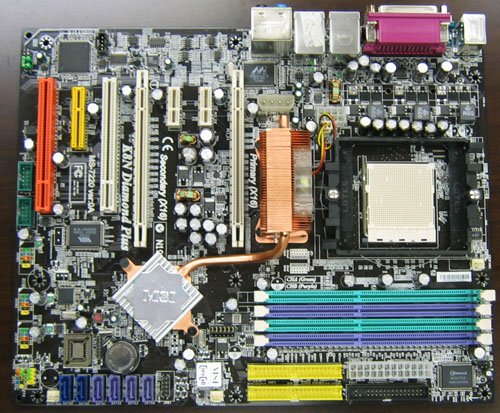

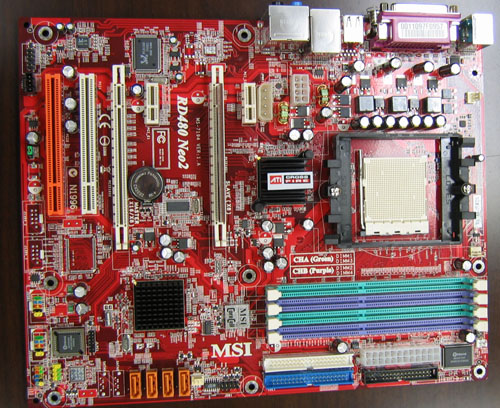
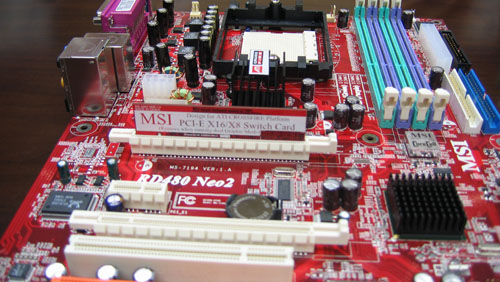
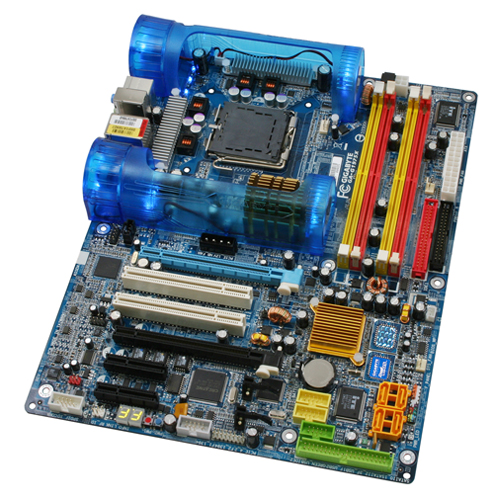
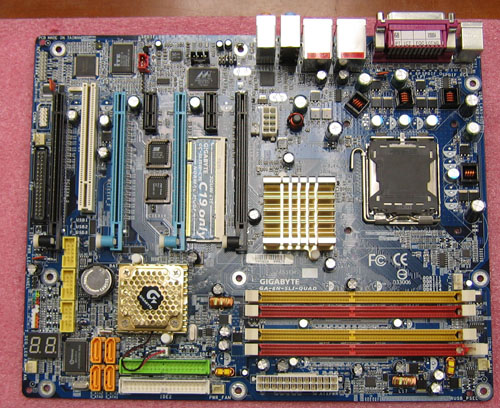








23 Comments
View All Comments
yacoub - Thursday, November 3, 2005 - link
Thanks! Any idea when we'll see that passively-cooled 7800-series card though?I'd love me some 7800GT passive aggressiveness.
nserra - Thursday, November 3, 2005 - link
I guess I will have to buy the ASROCK then.notposting - Thursday, November 3, 2005 - link
That was the only thing I read the article for myself, was anyone else doing an AGP/PCIe ULi board?I might be getting that Asrock board pretty soon if not.
KristopherKubicki - Thursday, November 3, 2005 - link
ECSgunblade - Thursday, November 3, 2005 - link
So, DFI is getting into the Graphic card market now?Good for them I guess, since they can push the Ati card together with the Crossfire MOBO. However, too bad Ati doesn't allow pre-OC the graphic card or else driver will reject it.
Ledu RF - Thursday, November 3, 2005 - link
First of all, i think that your article is very good but not complete, i can't understand how can you make a review about mobo makers like "ECS" and not make a review about others like Aopen who realy deserve to be in this place :-(.thanksKristopherKubicki - Thursday, November 3, 2005 - link
Well the problem was that I didn't really spend a lot of time there. ECS is actually a lot larger than AOpen too - I tried to get as many of the big guys in at once. There will be some more follow ups in the next couple days.Kristopher
imaheadcase - Thursday, November 3, 2005 - link
I wonder why did they put all the PCI/AGP/PCIx cards unside down? I always seemed like being on top was better for airflow. Was it from a old old case design or something? Nothing more annoying that when a website asks for a serial number is having to take card out instead of looking on top for SN :D Or cleaning PC out having to take out card to clean the fan on graphics card better.Anyway, asus is on right track putting GPU on top, will make watercooling installing much smoother to :D
SpatulaCity - Thursday, November 3, 2005 - link
The expansion cards are not upside down, your case is upside down. Just flip your case on it's head and everything should be good. :pBrian23 - Thursday, November 3, 2005 - link
ISA cards were right side up. PCI cards were made backwards so you couldn't accidently stick them in an ISA slot and short it out. Then when AGP came, they just moved the connector so it was physically impossible to put a PCI card in an AGP slot. AGP cards were made upsidedown because They didn't want to limit the number of PCI slots a system could have. At the time, mobos had ISA, PCI, and AGP all on the same board. With PCI in the middle, an extra slot would be lost if the AGP card was made right side up. Who would want a mobo with only 2 PCI slots? Anyways, now ISA is gone giving more space for more PCI slots so it's not that big a deal to give one up to flip the card over. Just make sure the mobo doesn't have parts in the way on that side of the card.